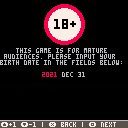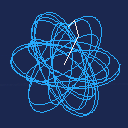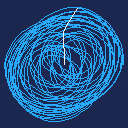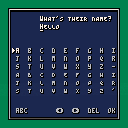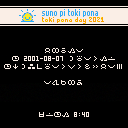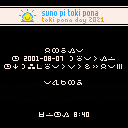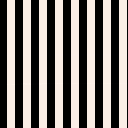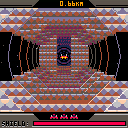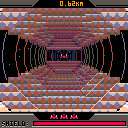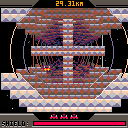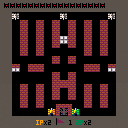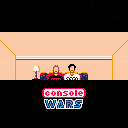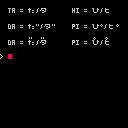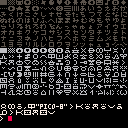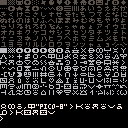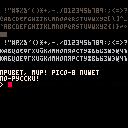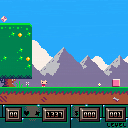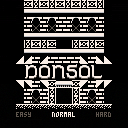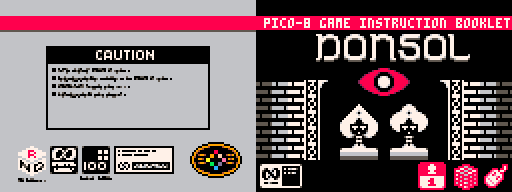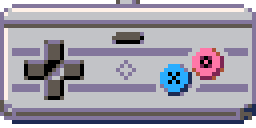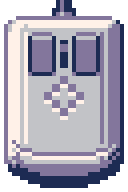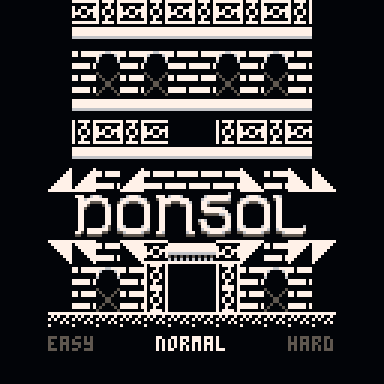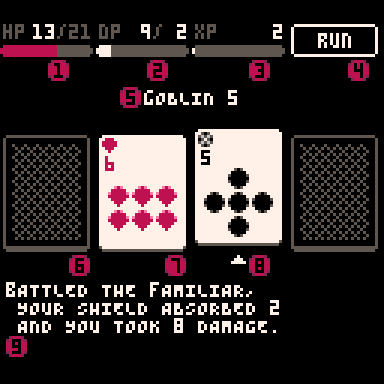This is a small work-in-progress demo thingy that tries to imitate the way special stages in the first Sonic game work.
Is very unfinished and probably very buggy.
Changelog:
Current version:
- Added the special stage music, as composed by Gruber.
- Modified the check for whether the character is in the air by only checking sensors that are close to the ground.
- Fixed a rounding bug that resulted in in-air checks failing half of the time on walls facing two of the four directions.
- Debug functionality: the background is changed from blue to purple whenever the main character is in the air.
Version 2:
This is a small snippet of code that asks the player for their birth date, checks if they're over 18 years old, and either passes or blocks them from playing whatver game is implemented in the cartridge.
If the player already passed the check once, it's saved in the cartdata, so they don't have to do it every time.
To implement this in your game:
- copy the entire contents of tab 1 into your game code somewhere
- add
🐱ok=falseat the start of your game code - add the
🐱init()call in the beginning of your game, but after thecartdata()call. If your game doesn't use cartdata, you may skip this step, but the game will ask for the player's birth date every time it's launched.
Inspired by this demo, I decided to implement the same idea using PICO-8. Instead of using spare RAM for effects, I went with the newly-introduced spritemap/screen mapping feature, by drawing the spirograph to the spritesheet and then drawing that onto the screen, so that hands can be added later.
Change log:
Version 2 (current)
- added the ability to use the O button to accelerate the drawing process
- set the cart to run at 60fps
Version 1:
This is my attempt to implement an RPG-style name entry dialog, which should be helpful for others as well.
It doesn't use any sprites or map elements, so its code should be easily usable in other cartridges.
You can use this code according to the CC-BY-SA-NC 4.0 license, as is default, or according to the MIT license below:
Today is the 20th birthday of the minimalist conlang "toki pona". An event is held to celebrate that. I made a small PICO-8 cartridge to celebrate it.
Controls: UP/DOWN -- move time one hour ahead or behind
LEFT/RIGHT -- control the wind
O+X (Z+X on keyboard by default) -- activate easter egg
Changelog:
Version 2 (current) -- fixed time calculation so the cartridge doesn't crash long before or after the event.
Version 1:
This is a WIP remake/port of the "Space Race" TIC-80 game by Fubuki. I have managed to make a version of the game that, with some compromises, runs at a stable 30fps and provides a simple game experience, in which the ship has to run along an endless tube, avoiding walls.
I have added collision detection and a simple scoring system to the game, as well as made the game use perspective-correct maths for everything.
Version 3: added a rendering hack that simplifies the topmost and bottommost parts of walls hidden by other walls, should make the game run at a stable 30 FPS all the time.
Old versions:

This is a work-in-progress port of "Battle City" (1985, Namco, Famicom) for PICO-8. The basic mechanics have been introduced, but the enemy AI is absent, certain UI elements aren't implemented yet and there's very few sounds and no music.
The goal is to implement all of the game mechanics completely, and then to try and improve on the game by adding extra features, like 4-player support.
Notice: so far, the more playable version is "Pico Tanks" by Shogal.
I decided to cover the "Console Wars" web series' intro tune, and make a little PICO-8 cartridge to go along with it. Since there's no real gameplay, I guess it's kind of like a demo, but it doesn't really stretch the PICO-8 capabilities in any noticable way or do anything impressive. Just a thing I did for fun.
The decoration feature of PICO-8 v0.2.2 could also be useful to also draw dakuten / handakuten marks above the kana characters, rather than to the side of them, but sadly, since the current syntax only allows them to be shifted horizontally between -2 and 1 pixels.
Maybe it's worth it to adjust the "\v" character syntax so that it works differently after wide characters, or add a different one where the horizontal shifts use 3 bits instead of 2 (and allow for horizontal adjustments between -4 and 3 pixels?).
Continuing my topic of custom fonts, here's one that replaces almost every character in the later half of the character set (which is usually taken by patterns, hiragana and katakana) with the 120 official characters of the "sitelen pona" writing system for the minimalist conlang "toki pona".
Here's the charts of characters:
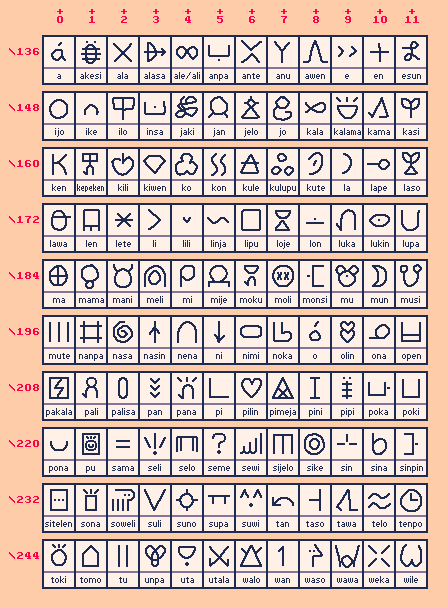
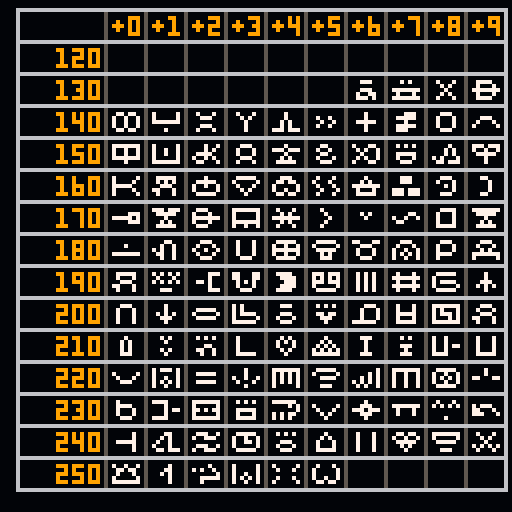
Changelog:
Version 1.1 (current):
- slight adjustments to some characters, an easier-to-understand "moli"
Version 1.0:

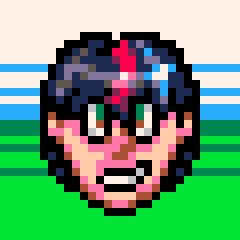

This cartridge uses the PICO-8 v0.2.2's custom font functionality to provide an additional font with Russian letters (with the exception of Ё).
The characters are mapped similarly to the KOI8-R encoding, so that similar Latin characters are mapped to similar Russian ones. For example, "РУССКИЙ ТЕКСТ" (Russian text) is encoded as "RUSSKIJ TEKST".
To use the font, just copy the "setfont" function into your program, call it at the start of the program, and use the commands to switch to the custom font and back whenever you need to print Russian characters.
For example, this line will output "привет, мир! pico-8 пишет по-русски!" ("hello world! pico-8 is writing in russian!")
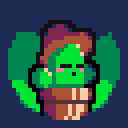

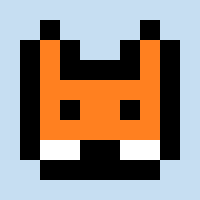
This is basically me testing how the "second palette" pokes work on PICO-8. The lower 24 rows of the screen are now occupied by a HUD strongly inspired by the game "Ultracore", which displays (fake) number of lives and ammo and (real) number of gems collected and level number.
The status bar area uses its own palette with lots of colors from the second set of 16 colors, but doesn't interfere with the game itself (though the camera had to be raised a bit to make it work).
2-player mode is not tested, probably will break.
Changelog:
- v2: made the game apply the second palette whenever the first one is updated, now that its existence is official and pal() resets it as well.
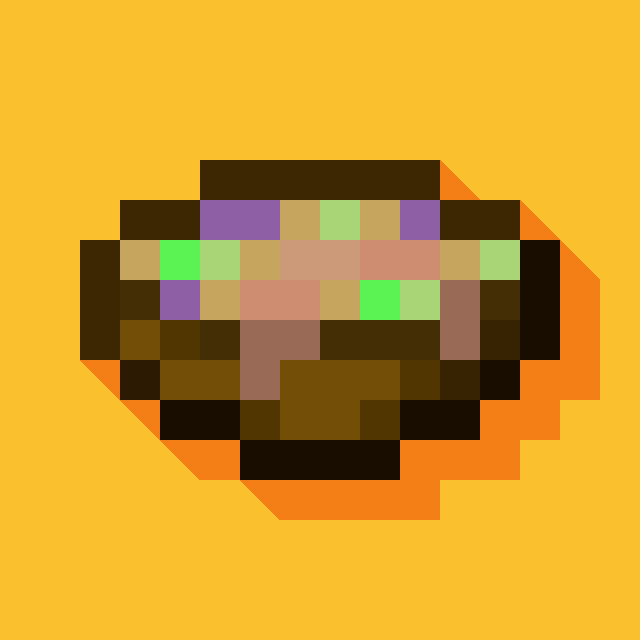
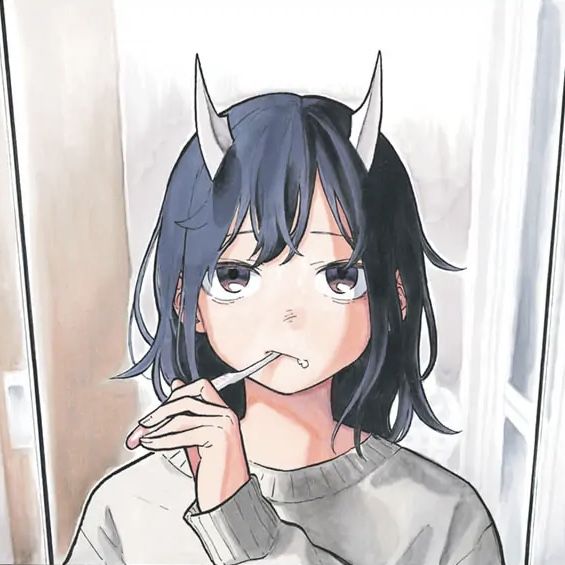

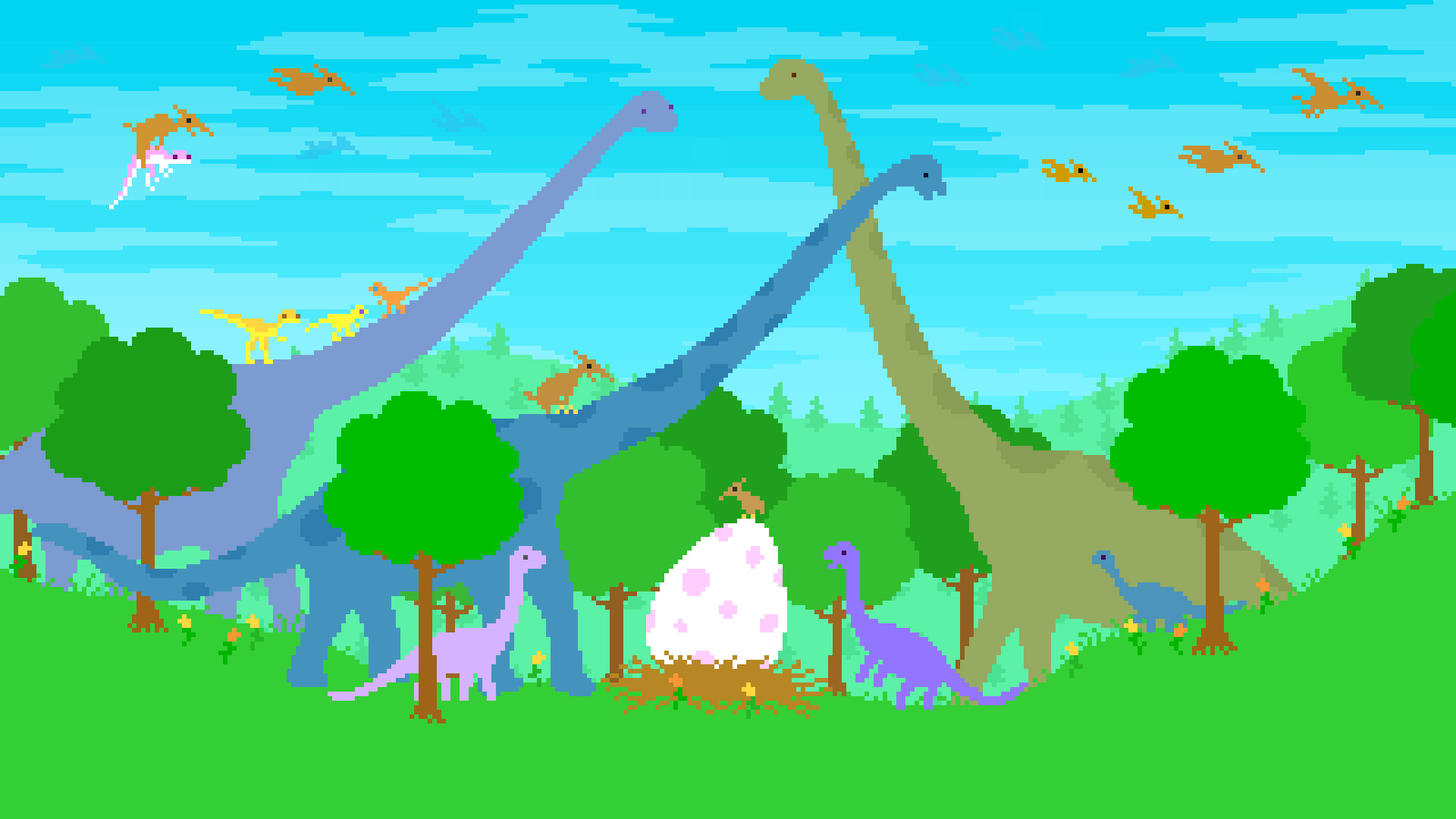


This is a PICO-8 port of Donsol by John Eternal and Hundred Rabbits, a dungeon-crawler game built around a deck of 54 cards.
INSTRUCTION BOOKLET
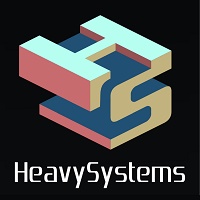



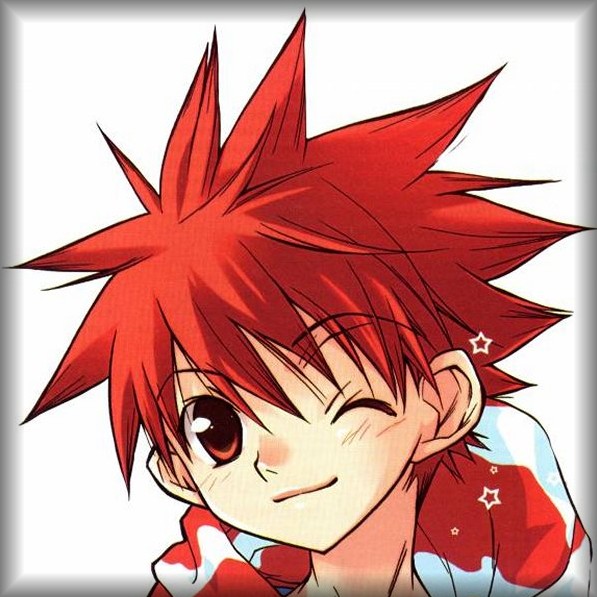

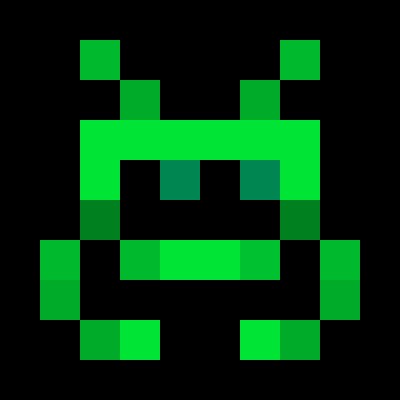







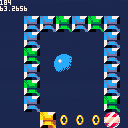
 0 comments
0 comments
